Running Ubuntu-IVI Remix Natively on ExoPC Atom Slate
and in Qemu on Debian
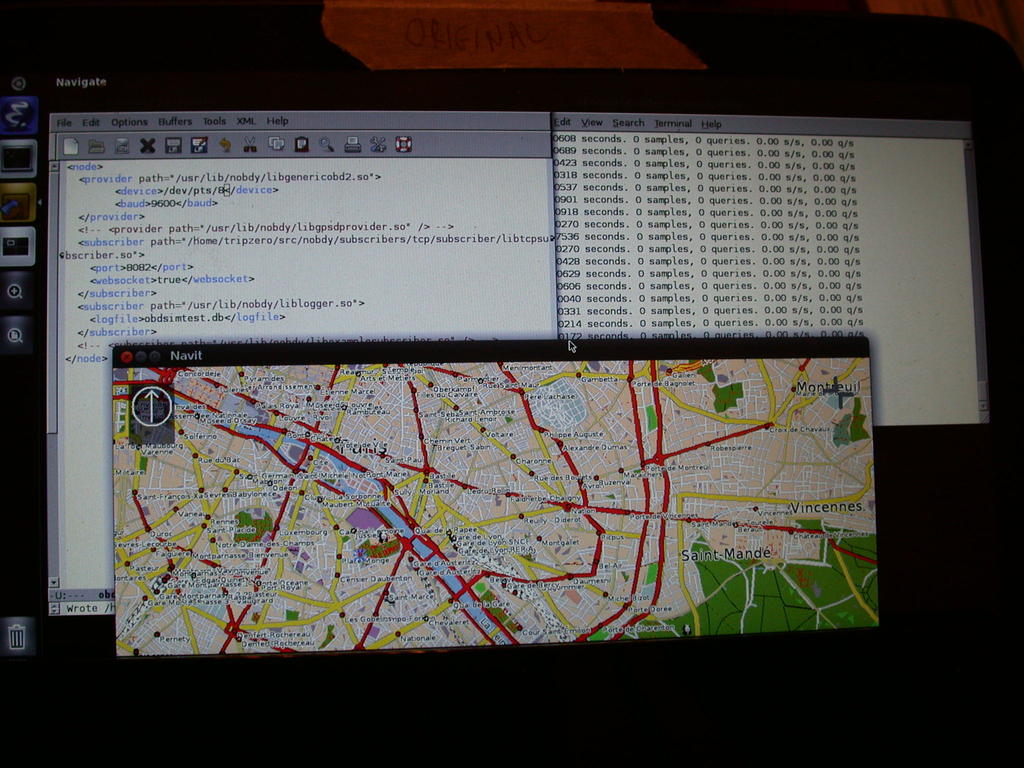 Ubuntu IVI Remix natively installed on an ExoPC Atom slate tablet.
obdsim (part of obdgpslogger) is running in the background right
xterm, but is not talking to Navit (yet). The mighty emacs on the
upper left shows the nobdy config file.
Thanks very much to Intel for the equipment donation!
Ubuntu IVI Remix natively installed on an ExoPC Atom slate tablet.
obdsim (part of obdgpslogger) is running in the background right
xterm, but is not talking to Navit (yet). The mighty emacs on the
upper left shows the nobdy config file.
Thanks very much to Intel for the equipment donation!
The Ubuntu-IVI installer writes over the entire hard disk! Do not
use the installer on a system that has data that you want to keep.
The instructions below are for running in a virtual machine.
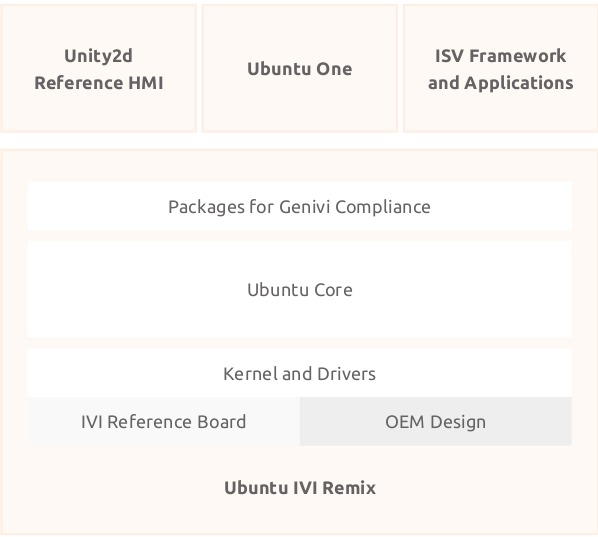
Running natively on an ExoPC Atom Slate
I installed from a CD drive connected via USB, as I couldn't get
installation directly from USB to work for some reason.
The i386 ISO produces an installation which works similarly to the
VM one, although I can't get the WiFi to associate stably with an
access point despite concerted effort with wpa-supplicant, jockey-gtk,
Gnome applets, etc. MeeGo and Ubuntu Maverick desktop image wireless
connectivity work fine.
In a Qemu-KVM Virtual Machine
First steps
- Read the datasheet and release notes.
- Get the ISO from Launchpad.
I chose falmouth-natty-x86-iso-20111219-2.iso.
- Check the md5sum.
Install the ISO image into a Qemu-kvm instance
The following presumes that your ISO is in the directory
/opt/Ubuntu and that you have the Qemu and kvm tools installed. Most
Linux distros provide them. libvirt and libguestfs are useful as
well.
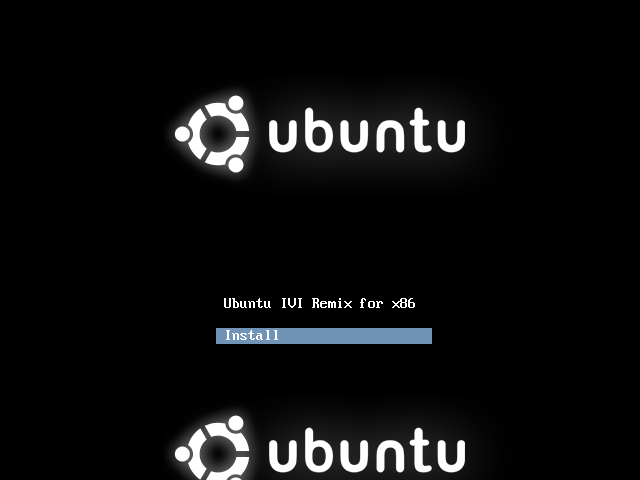
Installation on Fedora 14:
In order to install followed by shutdown, run the following bash script as
sudo -u $USER install_Ubuntu_IVI_Qemu
Without the -u setting, the script exits with the puzzling "Could not
initialize SDL(No available video device) - exiting" error, which is
actually from xauth.
#!/bin/bash
sudo qemu-img create -f raw /opt/ubuntu_ivi_natty.raw 10G
sudo chown alison /opt/ubuntu_ivi_natty.raw
qemu-kvm --cdrom /opt/Ubuntu/falmouth-natty-x86-iso-20111219-2.iso -boot d -hda /opt/ubuntu_ivi_natty.raw -m 2048 -usb -soundhw all -net nic,model=e1000 -net user,hostfwd=tcp:127.0.0.1:6666-:22 -vga std -name ubuntu_ivi -localtime -no-reboot
Running post-installation on Fedora 14:
#!/bin/bash
qemu-kvm -boot c -hda /opt/ubuntu_nobdy_bldr.raw -m 4096 -usb -soundhw all -net nic,model=e1000 -net user,hostfwd=tcp:127.0.0.1:6666-:22 -vga std -name ubuntu_nobdy_bldr -localtime
Installation on Debian Wheezy. (As noted above, run the script with "sudo -u $USER".)
#!/bin/bash
#Without -u, xauth error:
ROOTDIR=/fedora14/bonnet_f14/opt/opt/Ubuntu
sudo qemu-img create -f raw ${ROOTDIR}/ubuntu_ivi_natty.raw 10G
sudo chown $USER ${ROOTDIR}/ubuntu_ivi_natty.raw
qemu-system-i386 --enable-kvm --cdrom ${ROOTDIR}/falmouth-natty-x86-iso-20111219-2.iso -boot d -hda ${ROOTDIR}/ubuntu_ivi_natty.raw -m 4096 -net nic,model=e1000 -net user,hostfwd=tcp:127.0.0.1:6666-:22 -name ubuntu_ivi_natty -localtime -no-reboot
Running post-installation on Debian Wheezy:
#!/bin/bash
qemu-system-i386 --enable-kvm -boot c -hda /fedora14/ubuntu_ivi_natty.raw -m 4096 -net nic,model=e1000 -net user,hostfwd=tcp:127.0.0.1:6666-:22 -name ubuntu_ivi_natty -localtime
Note this bug
report on Wheezy:
If I do not specify VGA driver at all, meaning I do not use "vga=std"
or "vga=vmware", things work as expected needing no change in any
other parameter. So, it really was the VGA driver the one making "qemu
-enable-kvm" not to work.
I gave the VM 10GB of real disk space. If your disk doesn't have
that much space, you can allot less. What the minimum reasonable
amount might be, I don't know.
The installer is a fairly typical Linux one except that IT WRITES
OVER THE WHOLE DISK WITHOUT ASKING. Now I warned you twice!
Note that I said "-no-reboot". When the installation finishes, the
VM will shut down. That way you can watch the reboot or start with
different settings for normal operation.
Run the ISO image in the Qemu
I allotted the VM 2 GB of real memory. Once again, if this chokes
your system, allot the VM less.
By default, the image comes with no GUI. Nonetheless, booting into
it with the script above takes the user to vt7, where nothing is
running. In Fedora 14's Qemu, switch to vt1 by typing "alt-f1", not
"ctl-alt-f1", since "ctl-alt" is a Qemu keyboard shortcut to free the
mouse cursor. On Debian Wheezy, follow the instructions under "How
to get Qemu monitor" to switch to the console.
As with any new installation, type "apt-get update." Note that the datasheet says:
The IVI Remix does not include a user interface or HMI by
default. A sample user experience using Unity2d (based on
Qt) and including UbuntuOne support and several sample
applications is available for installation.
Read the "Demo Ubuntu IVI packages" section in the Release Notes.
In fact, "apt-cache pkgnames | grep unity" shows 9 packages with
"unity-2d" in the name. "apt-get install unity-2d-head" pulls most of
these packages. Be sure to choose "unity-2d-head" rather than
"unity-2d," which does not pull down gdm, resulting in a black blank
screen on vt7 upon reboot. You might also want to install other
utilities like emacs, mlocate and man, while you're at it.
Also install ivi-demo, as otherwise this whole exercise is
pointless. It's another giant installation.
Reboot again. gdm should come up.
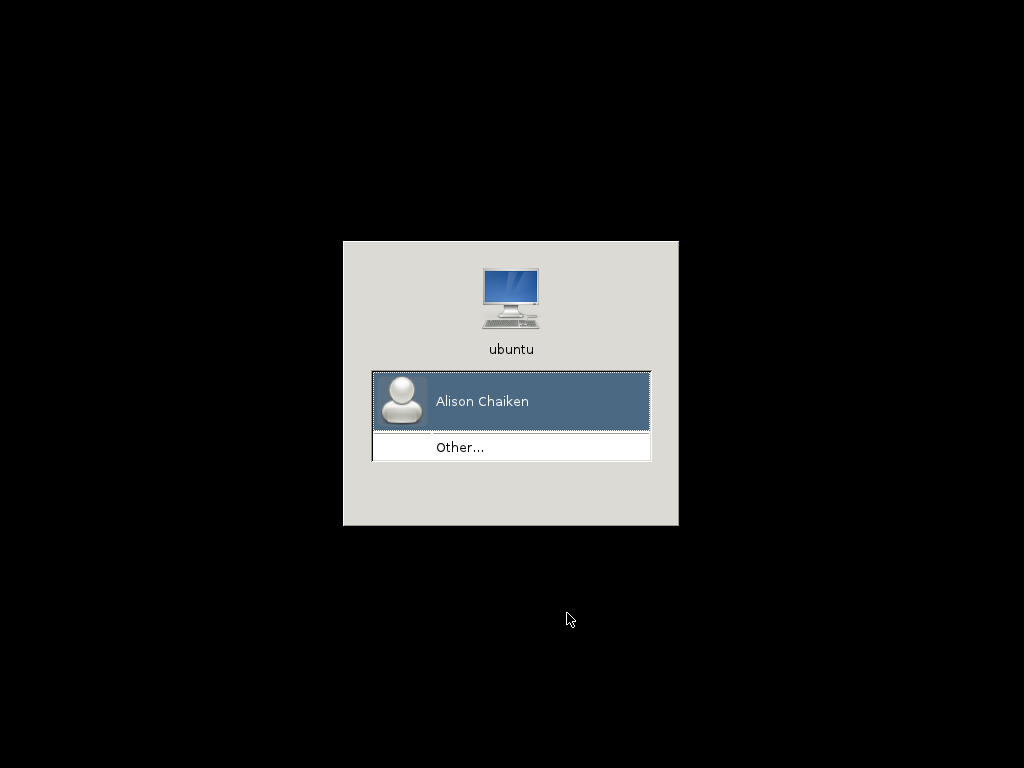
That's better. As promised by the datasheet, the Ubuntu IVI Remix
doesn't have a lot of software in it. The kernel is 2.6.38-8,
presumably because the basis is the older 11.04 release.
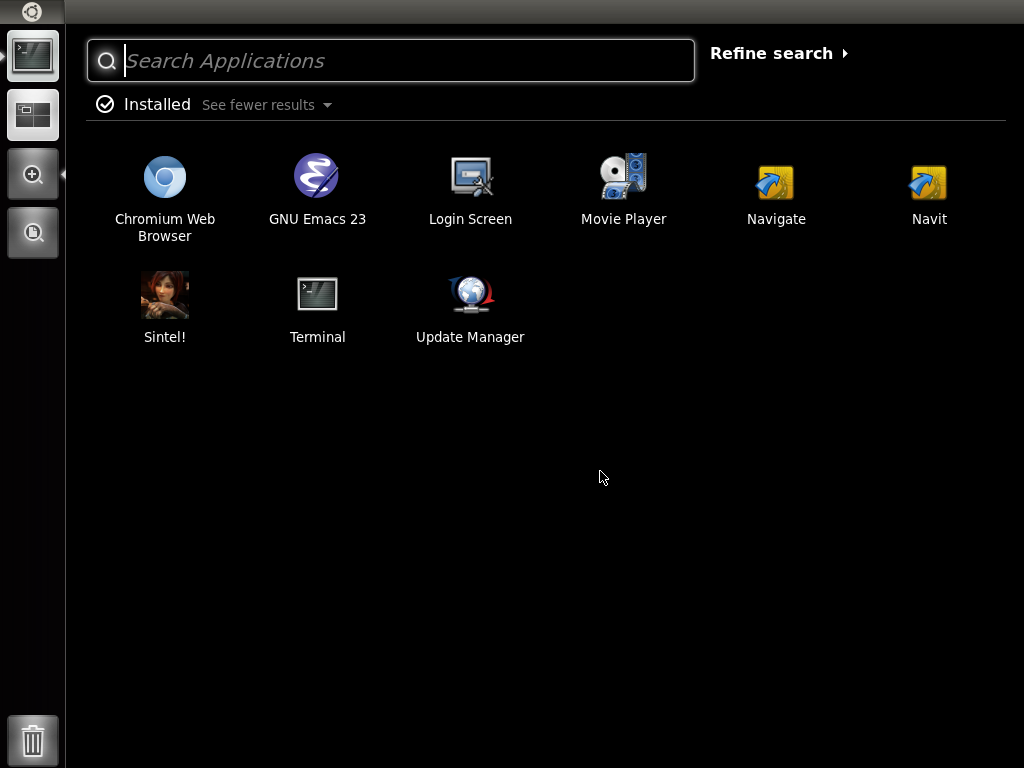
Installing and Running nobdy
For a VM, follow the wiki instructions
under "Simpler Example invocation method 2 for systems with a network
connection." The "without a network connection" instructions work on
the ExoPC hardware.
 Ubuntu IVI Remix natively installed on an ExoPC Atom slate tablet.
obdsim (part of obdgpslogger) is running in the background right
xterm, but is not talking to Navit (yet). The mighty emacs on the
upper left shows the nobdy config file.
Thanks very much to Intel for the equipment donation!
Ubuntu IVI Remix natively installed on an ExoPC Atom slate tablet.
obdsim (part of obdgpslogger) is running in the background right
xterm, but is not talking to Navit (yet). The mighty emacs on the
upper left shows the nobdy config file.
Thanks very much to Intel for the equipment donation!



